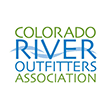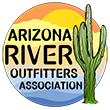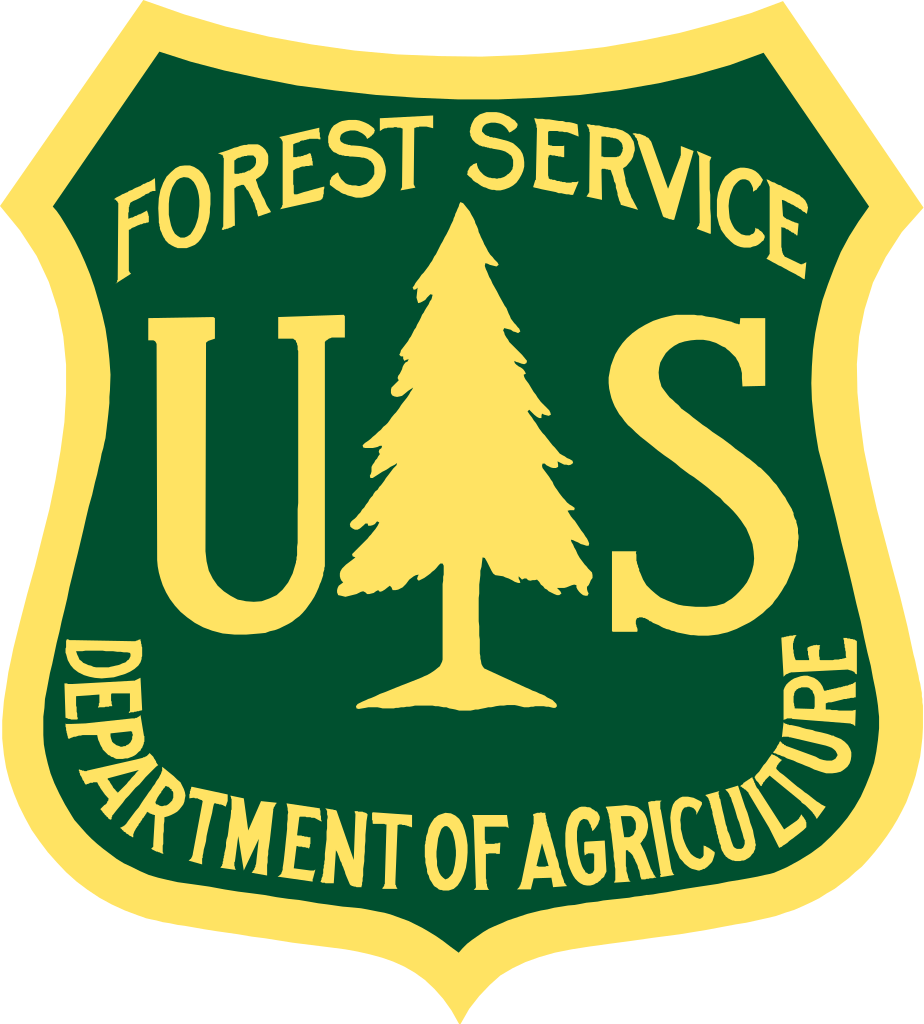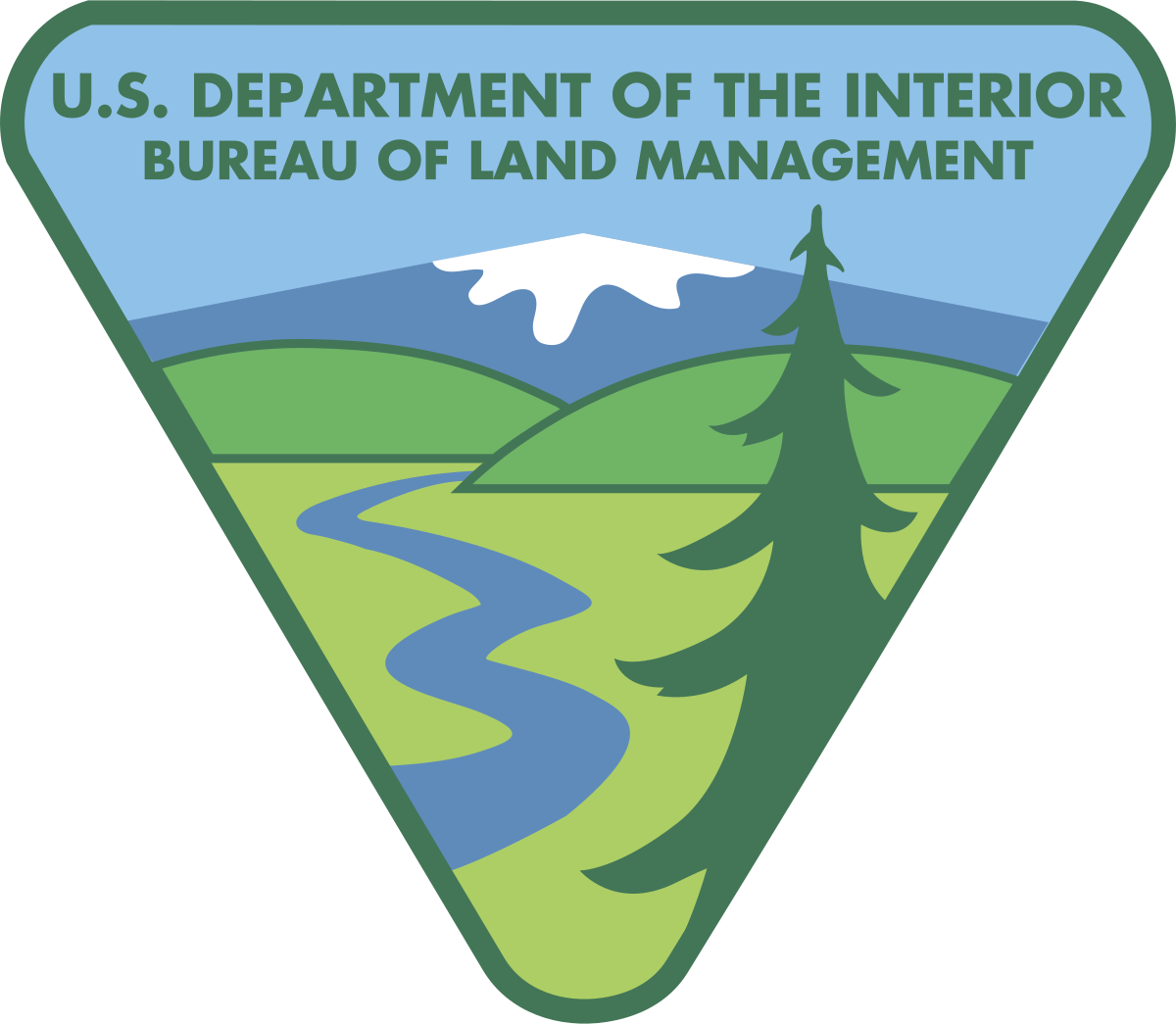Gold Mining Blocking Colorado Wilderness Protection Around Browns Canyon
Anyone who’s visited Browns Canyon would agree that the 20,000 acres of natural landscape surrounding it is beautiful, magnificent, and worthy of becoming a national monument as Colorado State Senator Mark Udall proposed in a bill. However, this bill is getting stalled by two groups who staked their claims on gold mines in December 2011 when the ban on gold mining lifted in this area. More Wilderness, Less Mining From 1980 to 2011, the Federal Bureau of Land Management designated this area for wilderness study, which prevented anyone from mining there. As soon as the ban expired, the two groups filed for five mining claims along the Arkansas River. Mining would lead to new roads, more development, runoff and more. In 2005, Republican Congressmen Joel Hefley and Republican Senator Wayne Allard tried to protect this area as well but their bills fell through. Why Gold Mining is Bad Gold mining these days is not shifting a pan in a river. Retrieving enough gold to make an 18-karat wedding band means extracting 20 tons of ore and waste rock. This ore and waste rock needs to be placed somewhere so trees are cut down to make room. Mining produces toxic mine drainage, which comes from unearthing rocks that have been buried long ago, releasing trapped air and moisture that leads to chemical reactions resulting in acid production. These acids then leach toxic metals such as arsenic, copper, mercury, and sulfuric acid, which then runs off into various bodies of water, the closest here being the Arkansas River. Gold mining runoff is very toxic for fish and other aquatic creatures. Non-aquatic animals then eat those in the water or drink the water, and you can see the snowball effect from there. In addition to polluting the water and grounds, extracting gold reveals mercury and when gold is roasted, mercury is shot off into the atmosphere. If they don’t roast the ore, then it’s doused in cyanide, which is very lethal. Mercury with all of its negative health effects, never degrades but at least cyanide does. Unfortunately, during the degradation process of cyanide, lots of byproducts then contaminate the groundwater. Browns Canyon a Wildlife Haven Browns Canyon is home to a large variety of animals and referred to as a mecca for wildlife. Visitors can often see bighorn sheep, golden eagles, elk, peregrine falcons, bobcats, black bears, mule deer, mountain lions, bats, and more. There are 100 miles of the Arkansas River designated as Colorado’s longest stretch of Gold Medal Trout Water. The flora, fauna, and adventures around Browns Canyon attract over 250,000 rafters, 100,000 anglers, hunters, hikers, and other guests each year, generating over $55 million in revenue for Colorado. Gold mining would not only pollute the water, ground, and air, it also results in erosion, sinkholes, and loss of biodiversity by destroying fragile ecosystems and wildlife habitat. In order to prevent this bill from dragging along in Congress, sponsors are thinking of asking President Obama to help rush this and declare Browns Canyon a national monument. Find out how you can help support the protection of Browns Canyon by visiting Friends of Browns Canyon.
10 Reasons Why We Need to Protect Our Rivers
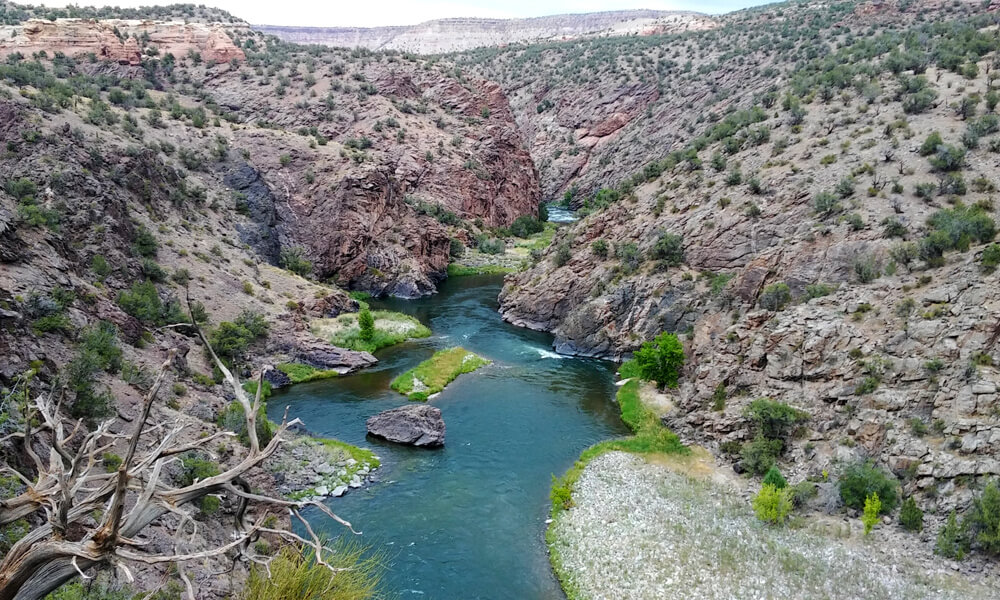
A great snow season means more snow melt and water for our rivers. With warm weather hitting spring earlier, reservoirs are releasing water from their dams and filling the rivers sooner. And that is good news for us—the rafting season starts earlier! For all of you itching to get on the river, you don’t have to wait until summer begins. Besides depending on a great snow season for full rivers, it’s important that we be active in protecting our rivers too. Not only are healthy rivers necessary to hit some hardcore rapids, they’re necessary for the ecosystem around us. The plants and animals surrounding the river and canyon would not thrive and be as beautiful as they are if our rivers were polluted. Water is important for everybody and everything’s health. The human body is 55-60% water. The Clean Water Act The Clean Water Act of 1972 has helped to keep “billions of pounds of pollution” out of our rivers by addressing point sources like wastewater treatment plants and factories (AmericanRivers.org). However, a lot of polluted runoff is picked up along city streets and farmlands. This act came about after people began to realize how dirty rivers were. The Cuyahoga River caught on fire due to oil slicked pieces of debris and if you fell into the Potomac River, you needed a tetanus shot. The Colorado River itself supplies 36 million people with water from Denver to Los Angeles. About 78% is used for agriculture, which grows 15% of our nation’s crops. Ultimately, rivers are a vital part of living. They tell a story, provide geologic, ecological, biological, and human history, shape culture and societies, provide transport, purity, and more. A deep respect for the river is cultural and together we can work to embed that respect in others to maintain and improve the health of our rivers. For those of you who worry that your small actions won’t make a difference, consider everybody that you share this information with, those who already make an effort, and how all these actions will collectively and positively improve the health of our rivers. Reasons to Protect our Rivers Make rivers safe for people to use Protect river ecosystem Help plants flourish Allow animals to thrive Keep pollution out Clean drinking water Agriculture Protect geologic, ecological, biological and human history Helps shape cultures and societies Transportation Check out this list of 50 Ways to Save Your River for more ideas on how you can help. See you on the river!
Guide to Rafting the Grand Canyon
White water rafting in the Grand Canyon is a rare opportunity because as a result of overuse and drought, private and commercial rafting is highly regulated and capped. If you do get the chance, it could be pretty expensive too as prices range between several hundred dollars to $3,000. However, the amazing views and experience alone are worth it. Regardless of whether or not you’ve been to the Grand Canyon, each stretch is incredibly different and the various canyon sections tell a different tale. The opportunity to raft down in the canyon and see the spectacular art and geological history made by nature will not only check off your list of visiting one of the Seven Wonders of the World but also an adventure off your bucket list. Grand Canyon Rafting Trips Require Patience In order to even have a chance at rafting in the Grand Canyon, there are two options to go about it. Go through a commercial river trip with a professional guide—trips are reserved one or two years in advanced Non-commercial self-guided river trips—enter a lottery for a chance to raft the following year The lottery for rafting opens every February for the first three weeks. People who are interested are interested must pay a $25 fee for the “lottery ticket.” If you’re one of the lucky few who win, you’ll must immediately pay a nonrefundable deposit of either $400 or $200, which goes towards your permit fees. Then you’ll be able to pick trip dates for the next year. Those who did not win still have the opportunity to win throughout the year as people cancel or drop out. For more information on the Grand Canyon rafting lottery, visit nps.gov. Preparing for a Grand Canyon Rafting Trip If you choose to go on a commercial rafting trip, there are various skill levels available. The easiest is what’s known as a, “Smooth Water Float Tour,” where kids as young as 4 can ride and there are no white water or rapids. However, thrill seekers can be sure that there are various skill levels also available. Many of the trips range between 5-17 days long. Since many of the trips are extensive, it’s more important than ever to make sure that you pack the right supplies and gear, keeping in mind that cell phones don’t work in the Grand Canyon, especially that far down. In addition, improving your endurance and core strength several weeks before the trip will make rafting a lot more fun and less tiresome. There are many sections of the canyon to visit so if you have a particular section in mind or curious about what other areas look like, Google Maps has a Street View/River View of the Grand Canyon to check out. Open up a tab in your browser to maps.google.com and type in the location or “Grand Canyon.” At first, this map view will pop up. Click on the little yellow person in the lower right-hand corner and drag and drop it to a location on the river. Next, you’ll see some spectacular views of the Grand Canyon (and occasionally what appears to be someone in the river). Excited to go rafting here yet? We’ll help you figure out what to pack. Grand Canyon White Water Rafting Packing List Remember that you’ll be rafting in the canyon where sediments are frequently floating around in the water. Light-colored clothing is discouraged unless you don’t mind discoloration. River Gear Duffle Bag for Personal Items Dry Bag for Items Accessible During the Day (available through commercial groups) Gear Bag Dry Bag for Sleeping Bag, Small Pillow, & Tarp (available through commercial groups) Two-Piece Rain Suit 3 Swimsuits 3 Quick-Drying Shirts 1 Pair of Quick-Drying Pants Neoprene Socks Water Sandals or Water Shoes Lightweight Fleece Jacket Hat With String or Hat Clip Gloves Sunscreen, Lots of It Sunscreen Lip Balm Sunglasses with Safety Strap Campwear 2 Pairs of Pants, Underwear, Shirt, & Socks Sweater or Light Jacket Flip Flops Light Shoes or Hiking Boots 2 Sets of Capilene Long Underwear Sarong (Optional for Changing) Plastic Bags for Dirty or Wet Clothes Clothes Pins & Line for Drying Wet Clothes Daypack or Fanny Pack Water Bottle with Carabiner A Few Extra Carabiners Lotion or Aloe Vera Travel-Size Biodegradable Soap & Shampoo Camp Towel & Wash Cloth Toothbrush & Toothpaste Tissues Eyedrops Glasses, Contacts, & Saline Waterproof Camera with Extra Batteries & Memory Cards Insect Repellant Headlamp or Flashlight Medication Photo ID, Major Credit Card, & Cash Zip Lock Bags for Valuables, Etc. If you have any other essentials such as medication, nail clippers, etc. be sure to pack those too. Try to avoid any unnecessary items and remember that you’ll be outside all day and night with water on all sides and sun or rain in the sky. Can’t wait a year or two out to go rafting? We understand and we won’t be jealous if you book a Grand Canyon rafting trip so long as you scratch your rafting itch this year with us. Check out the Colorado white water rafting trips we have available or contact us today to schedule an exciting trip outdoors.
How A Bad Day Fishing Beats A Good Day Of Channel Surfing
Inspirational author William Arthur Ward once observed, “Adversity causes some men to break; others to break records.” However not everyone plays sports to keep score. Some people consider their best chance at playing a sport to be something others might classify as a recreational pastime, like fishing! When you see someone sitting in a boat in a body of water, relaxing on the bank of a river or lake, or standing on the beach with fishing pole in hand, it is easy to assume that this person is just lazing away the day. However fishing carries some pretty hefty health benefits, in some cases as much as playing a team sport! Health Benefits of Fishing The National Hunting and Fishing Day website reports that on the average, each year more than 44 million Americans who are age 6 or older spend time fishing. They might the country’s many lakes, rivers, and streams, or along the coastal areas, such as in an ocean or a bay. And that is good news, because that means 44 million Americans are getting off the couch and taking part in some kind of physical activity! This hobby is not just for sportsmen, as entire families spend time fishing together. Here are a few of the health benefits frequently associated with this recreational pastime. Low Impact – Fishing is not physically demanding, which means it does not take a lot of stamina or strength. This makes fishing the perfect sport for people of all ages, in most cases even ones faced with some type of health challenge. Heart Friendly – Walking from your vehicle to the fishing spot and reeling in the fish at the other end of the line both exercise your heart, while the stress-free times of waiting in between bites allows you to relax which helps lower your blood pressure. Fresh Air and Sunshine– Being outside means breathing in fresh air and soaking up some extra Vitamin D from the sun. Even if you suffer from seasonal allergies, there are steps you can take to enjoy being outdoors any time of the year to fish. Relaxing – When you are outdoors taking part in a recreational activity like fishing, you leave the stress of work and home behind. Stress free fishing allows you to clear your mind, relax, and perhaps even inspire your creative juices. Recreational fishing has no deadlines. Nobody keeps score about how many fish you caught or the details about the ones that got away. And unless you are taking part in some type of fishing contest, there is no clear winner or loser when it comes to recreational fishing. It is not just everyday, average Americans who enjoy fishing. Some of the biggest names in sports also enjoy recreational fishing as a way to kick back and relieve stress, including former NFL quarterback Peyton Manning, major league pitcher Mat Latos, PGA champion Tiger Woods, andNHL defenceman Ian White. Fishing Benefits – Not Just for Humans As you can see, who you are and the details of your lifestyle matter very little when it comes to this sport. While can enjoy the benefits of fishing just the same as anyone else, you are not the only one reaping the benefits! Fishing is as good for the environment as it is for the humans that take part in the sport. When you go fishing, you are supporting wildlife and fish management. Fishing often requires buying a license, and the fees for purchasing one go towards funding programs that contribute to conservation. Most importantly, fishing generates millions of dollars in taxes alone which supports jobs and boosts the economy. Finally fishing improves your diet. When sitting on the couch surfing the television channels, the refrigerator and kitchen are nearby, stocked with all sorts of foods. An afternoon of fishing limits you to what you pack in the cooler. Make sure you stock plenty of healthy treats and bottled water to avoid becoming dehydrated. And if you are up for the adventure of cleaning your catches, there is nothing like eating fresh fish that you catch yourself at the end of the day. At Wilderness Aware Rafting, being river runners we love fishing, but our passion is rafting. If you’re interested in a Colorado Rafting Trip, multi-day rafting trip, or want to try whitewater rafting the Salt River in Arizona, please be sure to contact us and find out what white water rafting trips we have available. Freelance writer Benjamin Baker loves camping and fly fishing in the wilderness around his home in Denver, Colorado. He even ties his own flies! Benjamin shares his home with his wife and their busy, growing teenage children.
Are Our Land Management Policies Working For Forest Fires?
With Fires Wreaking Havoc Across Colorado, Perhaps Our Land Management Policies Need To Be Updated In early July, 19 wildland firefighters were killed in Arizona making it the worst forest fire accident the state had seen since 1955 when 22 died in a similar attempt to slow down the progression of a wildfire. This and many other accidents have occurred during a time when it is being strongly questioned whether our policies for controlling forest fires is adequate. With millions of dollars being spent to control and mitigate the damage wildfires cause, and the cost of lives spent in with the same goal in mind, is it time to reconsider our stance? Is It Even Worth It To Fight Fires? The biggest problem we face with wildfires is that we are in essence fighting and attempting to prevent something that is natural, periodic, cyclical, necessary, and in the end unavoidable. When it comes down to it, we should always attempt to protect communities and other sensitive sites. But every year we fight forest fires that actually need to burn, stopping it only postpones the inevitable. Wildfires are a natural and efficient way for forests to naturally regulate themselves. Fires, rather than being viewed as a destructive force, should be viewed as a cleansing agent. Essentially, it is the washing of the land with fire, something that has always occurred, and always will. Fighting the inevitable seems more than counter productive, it seems as though it only exacerbates the problem. Made worse year after year until eventually it can’t be stopped because it has to happen. These fires help to get rid of dead or dying matter giving space for new growth to sprout. It kills off sick trees, and other forms of infestation such as the Mountain Pine Beetle. The decomposed matter helps to provide necessary nutrients making regrowth faster. And in the end, there are certain trees which absolutely require the aid of fires to release their seeds. So it’s quite obvious that fires need to break out from time to time. So why then do we try so hard to stop it? The Fear Of Loss People love Colorado and it’s mainly for one reason… its beauty. The trees that dot our landscape add to that beauty, and any person that lives in North Boulder, Durango, or Colorado Springs will recognize how fires can mar the land. Fires have been ragiing through Colorado for the last few years and the only reason they are doing so now is because it was either time, or we prevented the fires from occuring before. Again, postponing the inevitable. But is that needed? Is there no better way? Wilderness Aware Rafting had the opportunity to film the Royal Gorge wildfire while rafting, making a rather eery scene for participants. The Fear Of Change You can assume much of what we do in life follows the rule: Don’t fix what ain’t broken. And sadly, that goes for how our policies are at times both formed and kept. But just because we have been able to mitigate damage in the past does not mean we couldn’t do better. One idea being proposed is that we have a more strategic approach to controlled burns, and rather have controlled fires. Where certain sections of land are burnt down in a controlled manner. The idea essentially being not to fight fire with fire, but kill fire with fire. If there’s nothing to burn, a fire can’t rightly begin. The problem with this is that many of the areas which need this to occur are around or in recreational areas people frequent. Rather than having to give up the enjoyment of a certain area for years to come, they would rather try to hold it off. But whether we have to see the eye sore, or force our children, or their grand children, one this is certain. The fire will come, no doubt about that. And knowing it’s only made worse by postponing it, how far are we willing to let that go? The answer, history has shown at least, is until the bitter end. Perhaps it’s time to think for the sake of posterity. Perhaps it’s time to think on behalf of nature, and not for our selfish desires. Could safe us money, and more importantly, it could save a few lives. At Wilderness Aware Rafting, we understand how a proper family rafting vacation can create some of the best memories a person can have, after all, we have our testimonials to base that off of. If you are interested in a Colorado Rafting Trip, Denver Rafting, multi-day rafting trip, or want to try rafting the Salt River near Phoenix, AZ, please be sure to contact us and find out what white water rafting trips we have available.
The Ultimate Outdoor Colorado Trip
Plan Your Colorado Outdoor Adventure in Buena Vista Backpacker Magazine announced that 4 Colorado cities made the list as, “The Best Cities to Raise an Outdoor Kid: The Winning 25.” Those cities are: #1 Boulder, #3 Durango, #7 Colorado Springs, and #9 Fort Collins. Luckily for us, Colorado is an amazing state for outdoor adventures and Buena Vista is one of the top destinations for a beautiful outdoor retreat. No matter how old you are, we are all children at heart when we’re walking among nature and this is our recommended list of outdoor adventures for your weekend or week-long getaway to the mountains. Camping Start by picking out one of the many camp sites in Buena Vista as your home base. Anywhere you choose will likely have immaculate views of the mountains as Buena Vista, Spanish for, “good view,” sits at the base of the Continental Divide. Camping is a great way to get away from technology and enjoy the basics of building a fire and cooking your own food with the stars overhead. We also offer multi day rafting trips that combine the camping and rafting adventures into one. Whitewater Rafting Known for world-class whitewater rafting, this is a memorable and exciting adventure to take with friends and family as there are different levels available for everyone. Browns Canyon is rated #1 on TripAdvisor for a whitewater rafting trip and conveniently, we have trips to choose from here. Whitewater rafting is not only thrilling but builds camaraderie and trust among your raft mates. Hiking Spend the morning or afternoon hiking around the Continental Divide. Two 14ers are located near Buena Vista, Mt. Princeton and Mt. Yale. Mt. Princeton is 14,197’ tall with one 13 mile route on the east slope rated at a class 2 difficulty. Mt. Yale stands at 14,196’ tall and can be accessed by the southwest slope (standard route) or east ridge; both routes are about 10 miles long and a class 2 difficulty. As always, it’s important to pack appropriately for hiking of any type and bring plenty of water and snacks, as well as notify people where you’ll be in case you get lost. Horseback Riding Not long ago, Colorado was the home of cowboys on the Front Range. The majestic horses are still a valuable companion of humans provide a relaxing way to bond with animals and nature while wandering into the wilderness. As Colorado’s second most popular outdoor activity, friends and family will enjoy a horseback riding trip along the Arkansas River with spectacular views of Mt. Princeton, the Chalk Cliffs, and Mt. Antero. Canoeing and Fishing Nothing is more peaceful than floating on a lake or canoeing and kayaking down a lazy river. There is an abundance of lakes and creeks to choose from nearby. Cottonwood Lake is popular for fishing with mountain goats in the backdrop. For a hike-in area, Brown’s Creek has a 5 mile trail to a scenic waterfall. Anyone over 15 will need a fishing license and length minimums vary from location to location. Any combination of these trips will make for an exciting outdoor escape among friends and family. Buena Vista is a popular destination for outdoor enthusiasts due to the breath-taking views of the Rocky Mountains and the variety of outdoor activities just a few minutes away.
Ways To Get Your Kids Outdoors This Summer
Ways To Get Your Kids Outside Summer for kids is one of the more exciting times of the year. School is out, the weather is beautiful and they have nothing but time on their hands. But if your kid is like most others, much of that time is going to be spent indoors, and most likely staring at a computer screen or playing video games. If you intend to pry your child’s gaze and attention away from these electronic entertainment machines, you’re going to have to be clever. In fact, very clever, because every year that passes, the number of ways we can entertain ourselves indoors not only grows, but increasingly becomes better and better. Making it so we don’t even care that 10 hours was just spent being in an electronic daze. Drastic times call for drastic measures, and to help you get your kids out of that digital stupor, here are some ideas that may well excite them, and convince them that there is indeed a worthy physical world to enjoy outside of the Matrix. White Water Rafting Seeing as how we’re a rafting company, we know full well the enjoyment and excitement kids of all ages find from hucking some rubber on the river rapids. It makes for a full day out in nature, enjoying the sun, scenes, and adrenaline created. it also creates great lasting memories, and often times, these types of trips turn into something a family does every year as it allows for some of the best quality time possible. No phones, emails, or IM, just fun in sun with friends and family. Camping There should never be a reason outside of health that a kid would not want to camping. The problem with selling this idea is that camping alone means sitting and sleeping outdoors, that’s it. In order to spur some interest, you need to offer ideas that are to accompany the camping trip. Mountain climbing, fishing, spelunking, archery shooting, horseback riding, anything really. Kids inherently love the outdoors and this need to be remembered, the only reason they choose to not go outside is because the things they can do are limited, and when compared to what they can do online, it is drastically overshadowed until they are older and more independent. So it is up to parents to offer fun and exciting ideas. Get Wet Beyond whitewater rafting, there are numerous other things kids can do which are sure to get them excited. Kayaking and canoeing, wake boarding, paddle boarding, fishing, even finding an area where “The Blob” can be utilized will be sure to make your kids eyes widen. You can couple this idea with camping, and make a really enjoyable weekend out of it. Mountain Biking One of the easiest ways to explore the wilderness is to go trail riding or mountain biking. It gets you outside, and allows you to cover a great amount of ground that would otherwise not be seen if having to hike it on foot. For those that are really wanting to get out there, you can attach a trailer to your bike with camping gear and take an extended multi-night trip. These generally aren’t for the feint of heart, but if you are feint of heart, its a good way to make it stronger. Astronomy Oddly, many people think there isn’t much to do at night outdoors. But they often forget perhaps one of the coolest things that can be done overall… and that is to star gaze. Now many people may scoff at the idea, but if you’ve never brought a pair of binoculars or a smaller telescope with you when camping, you are doing yourself a disservice. With the lack of light pollution, you can see more out in the wilderness than in any other place. You ought to take advantage of that the next time you plan any trip outdoors. Weather permitting, you will be pleasantly surprised to stare into the heavens. Hunt For Plants, Animals, or Minerals When speaking of hunting, most people usually think of poor Bambi being slain, but you can hunt without killing. There are a whole slew of plants, animals, and minerals worth hunting for, and all that need be done is to find them. Geo hunting can be surprisingly gratifying, spotting a soaring condor hundreds of feet in the air leaves you breathless, and finding edible plants to make for a light salad at lunch will excite your taste buds. There are a lot of things in this world worth exploring and experiencing, you just have to make the effort to prove that to your children. If done correctly, you may well find your children begging you to go outside next time, rather than the other way around. At Wilderness Aware Rafting, we know that summer is finally arriving, and that means its time for some summer adventure. One fun summer activity that the family and your friends are sure to enjoy is White Water Rafting! The best Denver Rafting can be found with us, and if you’re interested in Colorado River Whitewater Rafting, or even a Whitewater Arizona River Rafting trip, be sure to check what trips are available or contact us to speak with a representative.
5 Great Ways To Experience The Great Outdoors Of Colorado
At Wilderness Aware Rafting, we know that people want to experience the great outdoors in a number of ways, and fortunately, there are many activities that can accomplish this goal. Whether that be Rafting Colorado rivers, guided Horseback Riding trips, or even just plain old back-country camping, Colorado is the perfect place to play outdoors for those still young at heart. If you are interested in doing something new and exciting, and want to do that outdoors, be sure to check and see what trip offers we have available! 5 Outdoor Activities To Experience The Wild Of Colorado For those of you that are native to the state of Colorado, you know full well the natural beauty that lays here. From the Red Rocks to Sand Dunes, from the iconic Rocky Mountains to the open prairies and plains, from mountain lakes to deep caves, the state is nothing more than one big adventure playground for those willing to explore. And explore you should. There are few places that match the wonder and beauty of this great state, and that is not to brag, but rather, to convince. It’s not as though we want to keep it to ourselves, but rather, share it with all so that they can enjoy it as we do. It is for this reason that we are going to discuss 5 of the most enjoyable ways you can experience the outdoors of Colorado. And don’t fret, everything on this list can be done by most people. Granted some may take a little adjusting depending on your health, age, or experience. But overall, these activities can be enjoyed by all, and should be. So without further ado, let’s get into it. Mountain Climbing: There many mountains to climb in Colorado, and dozens of 14ers for those who want to achieve that mile marker. The most popular of which are Longs Peak and Pikes Peak. The mountain you choose to climb, as well as the exact path, will directly dictate it’s overall difficulty. Some mountains you can almost drive to the top of, where you only need to hike a few hundred feet to make it to the peak, while others require thousands of feet if you were to start at the base. Either way, the feeling of achievement once you reach the top, coupled with the view you are gifted for your efforts makes mountain climbing in Colorado a must for anyone who currently lives here, or is passing through. Spelunking: If climbing up is not necessarily your thing, or you’re afraid of heights, then perhaps it’s worth considering climbing down. Cave diving / spelunking is often an overlooked activity in Colorado as well… most people don’t think to do it. There are dozens of caves throughout the state, some of which are miles in length and have magnificent mineral deposits developed inside. With stalactites and stalagmites, crystals, chutes, chimneys, and everything else a cave diver could dream of. Many of the caves also house wildlife such as bats and a variety of insects. If you are feeling adventurous, there are many isolated caves that can be accessed after a little hike, and even some you are forced to repel into. But if you want something a bit more relaxed, there are caves which have guided tours, are lit, have hand rails and steps, and overall are not dangerous at all. The most notable being the Cave of the Winds. Whitewater Rafting: What would Colorado be without the Colorado River? Well I suppose it would still be Colorado, but the river that begins here and ends in Mexico is one of the greatest rivers America has to offer to those thrill seekers who care to navigate its waters. Rafting is a perfect mix of adventure, relaxation, and site seeing all rolled into one convenient package. Depending on the class of rapids you choose to raft, you can expect thrilling adventure, or a slow leisurely and meandering course. You’ll get to see some sites that most people never get to witness since they are remote and not easily accessible without a raft. Overall it is perhaps one of the best ways to experience Colorado’s great outdoors. Skiing: More than anything, Colorado is known for its skiing. Between Vail and Steamboat Springs, many people in the U.S travel here to ski down their well groomed runs, and take a crack at the countless ski trails that line the land. Even if skiing isn’t your thing, Colorado is still a great place to experience a winter wonderland, where sledding, snowshoeing, and ski mobiles can be used to move across a land bleached in snow. The calmness that overcomes the state after a proper snowfall really sets the mood, not so much one of laziness and bundling up and staying indoors, but going out and feeling the brisk winter air, smelling the freeze that has settled, and watching the sparkling of the snow when the sun catches it just right. Camping: Finally, the creme de la creme for most people who live in the state. Camping in Colorado is without a doubt great. No better word could be used. Whether you are camping just to relax for a weekend, or you’re hiking the Colorado Trail, there is no better way to expose yourself to the great outdoors than by submerging yourself in it. That certainly means spending the night, because when you awake the next day to birds chirping, chipmunks scurrying, sun shining, and dew evaporating leaving the smell of a fresh rain… you’ll feel you’re in heaven. Because in a way you are, I couldn’t describe heaven on earth without thinking of Colorado. That’s certainly not an overstatement, and if anything, it still doesn’t give it justice. Hopefully this list will give you a few ideas of things you should most definitely do in Colorado whether you live here or are just visiting. There is so much to experience that you literally do have to spend quite a bit of time here to do it all, but fear not, Colorado isn’t going anywhere,
The Arkansas River National Monument
Senator Mark Udall Pushes For Browns Canyon Protection Democratic Senator Mark Udall is pushing for protection over Brown Canyon. His intentions are to create a national monument coined the Arkansas River National Monument. This would cover over 20,000 acres of BLM and National Forest lands and designate them as wilderness. Recently, President Obama made Chimney Rock a monument after efforts by Scott Tipton and Michael Bennter failed first. Though, this was the presidents latest attempt to try and help create more wilderness areas throughout the U.S. Over recent years, proposed wilderness designated areas have slowed down due to congress and self-interset groups, such as the National Rifle Association, stalling any efforts. As a result, in the current political climate, the only way for certain areas to receive wilderness level protection is through presidential designations. This obviously limits the number of areas that are not only focused on, but actually accepted. The Arkansas River National Monument is being proposed because rafting the Arkansas River has become one of the most enjoyed river activity in the world. Thus the number of people that flood to the the area to view the river, as well as the surrounding landscape, has swelled dramatically over recent years. A terrifying statistic for nature lovers and preservers alike is that the current Congress is on path to be the first Congress since 1966 to not protect a single acre of wilderness. The argument is that it is believed there have already been enough designated wilderness areas already. But there is one specific issue with prior areas deemed wilderness spots, and that is those spots are scenic and iconic areas, where the beauty of the landscape is awe inspiring. Enough that even those that hate the outdoors cannot help but marvel and wonder at the scenes these areas have. This leaves less beautiful areas forgotten, and unless there is some snow capped mountain, or flowing waterfall, people do not deem them “wilderness”. It’s a hard thought to consider how someone can view anything outside of a city or town not to be wilderness. As though everything but these areas are “tamed” or less wild. If you live in Colorado, there are more wilderness areas than developed, and by a large margin. However, the law happens to state otherwise. But for any area to be deemed “wilderness”, there are special considerations that come into play on behalf of law makers. So hopefully these same law makers will see that the Browns Canyon is indeed a special area, and one that is deserved to have a monument commemorate it. It will also help Colorado River Rafting down the Arkansas River become more popular since rafting companies can now say you will pass through “wilderness” areas. There is no doubt that Rafting in Colorado would not be what it is without the Arkansas River. Making the area a wilderness will also do a lot to help protect the Colorado Arkansas River. Water is and will always be a major topic in Colorado, as there are those that need it for pleasure and others that need it for necessity. Meanwhile, there are countless people outside of the state that rely on the water the flows here. There are also those that would like to develop in some areas, while others would like to mine. Either way, highlighting one area of Colorado at least helps to keep a watchful gaze on our state, both from the media as well as the citizens themselves. So it’s unknown what the future will hold, but we can only hope that it will be the designation of more wilderness areas throughout our country. As it is the wild that keeps America what it is, and I think that’s how people like it. If you are interested in a Colorado River Rafting Trip, or a Family Rafting trip in Colorado, you should be sure to contact Wilderness Aware Rafting, where our experienced guides can plan out the perfect get away or adventure for you. There are single day trips as well as Multi Day Rafting Trips. So depending on how deep you would like to get into the wilderness, there is no doubt we can help you in that endeavor. Update: The proposed area mentioned above is now known, as of 2015, as Browns Canyon National Monument.
How The Arizona Salt River Became Salty
The Thirsty Tree – The Tamarisk Salt Cedar There are only so few places in the world where one can go salt river rafting as it’s not exactly a common occurrence to find salty rivers.White water rafting AZ is an extremely thrilling and enjoyable experience, one that countless people enjoy every year whether that is by swimming, tubing, kayaking, or doing some Salt River white water rafting. Though, with as many people that enjoy the Arizona Salt River, very few actually understand why the fresh water of the Gila River, which turns into the Salt River Tributary, becomes salty to begin with once it leaves the White Mountains. The interesting thing is there is a little known reason as to why, which is even less common throughout the rivers of the world. The Thirsty Tree The Salt Cedar, also known as the Tamarisk, is a plant that lines the Salt River. They were introduced as a means save top soil from blowing away off of farms, to help keep banks from eroding into the river, and interestingly as a means to slow down evaporation of the river itself. They also replaced the areas where old forests of cottonwoods and willows once prospered. The Salt Cedar originates in dry climates throughout the Middle East, Asia, and parts of Africa. When they were introduced, there were no apparent negative side results whatsoever and the plant itself did very well in its new climate. What Makes The Salt Cedars Salty The Tamarisk has an incredible ability to draw the salt from the earth through a series of complex web of roots. The salt is then stored in the leaves of the tree. As wind blows and rain falls, the salt is knocked off the tree and into the water, thus making it salty. A Mistake From Long Ago Miners and farmers believed it was a genius idea; bring in a tree that requires little water, preserves the top soil and river banks, shields crops and homes from wind, and covers the river which will help to prevent evaporation of the river. What they found decades later was that the Salt Cedar had taken over and spread like wild fire. Little natural vegetation remained where the Tamarisk took hold and they wondered how much water was being lost to the stomata of the Salt Cedars. So they quickly made attempts to remove the Salt Cedar from river shores all across the southwest. But they found the tree were much more difficult removing than they were introducing. Its seeds would linger in the soil until rain fell, and trees would sprout up in their fallen brethren’s place. It was this cycle that continued for years until scientists found something out. Mistaking A Mistake For A Mistake What scientists found out in the mid 80s was that the tamarisk had not killed off the other vegetation, but the natural plants had died off due to their own inability to survive any longer. Areas where local vegetation persisted saw fewer Salt Cedars, which was because the Tamarisk could not naturally compete. They relied upon the local vegetation dying off for their own survival. They did in fact save the top soil and keep the river banks from eroding as there was little other vegetation helping in that fashion. They also found that the tree likely helped prevent the river water from evaporating more than the amount they took in for their own hydration. So in the end, Rafting AZ would not be the same without it’s unique salt river. The river would not have nearly as much salt in it if it wasn’t for the Tamarisk. So we should be thanking this foreign tree for helping to form a landscape and creating our unique river which would not be the same without it. AZ rafting adventures and salt river rafting trips can all be made through Wilderness Aware Rafting.


